Rodents of Usually Small Size
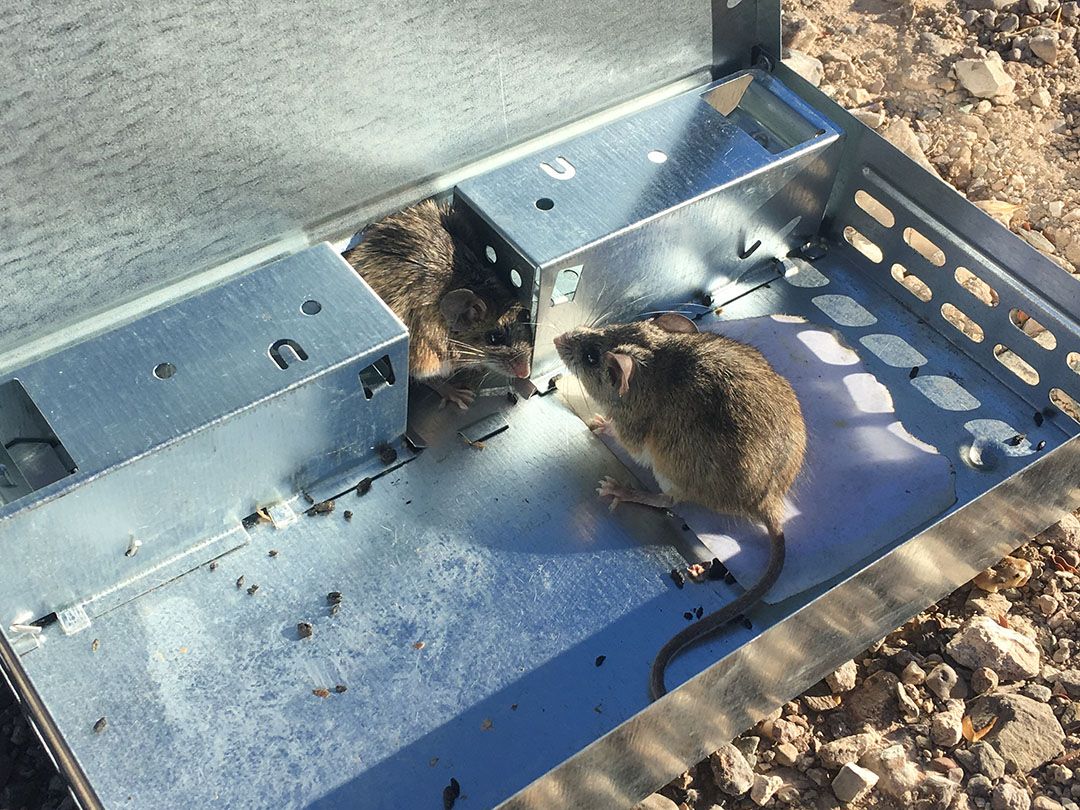
We’ve had more experiences with rodents since becoming fulltime RVers than we ever had in a sticks and bricks home. It’s kind of inevitable. Meet an RVer who boondocks and says they’ve never had a mouse problem and I’ll tell you they’re either lying or oblivious!
You have mice in your RV?! Where???
Thankfully (very thankfully), we have not had any rodents in our actual living space. Or, at least if we did, there is no evidence left behind. The problem we are having is that mice and rats occasionally find their way into our bays. For those not familiar with RV lingo, that’s the storage area underneath the RV. Most of our bays are connected somehow to the rest, so if a mouse finds it’s way into one, they can explore the entire area.
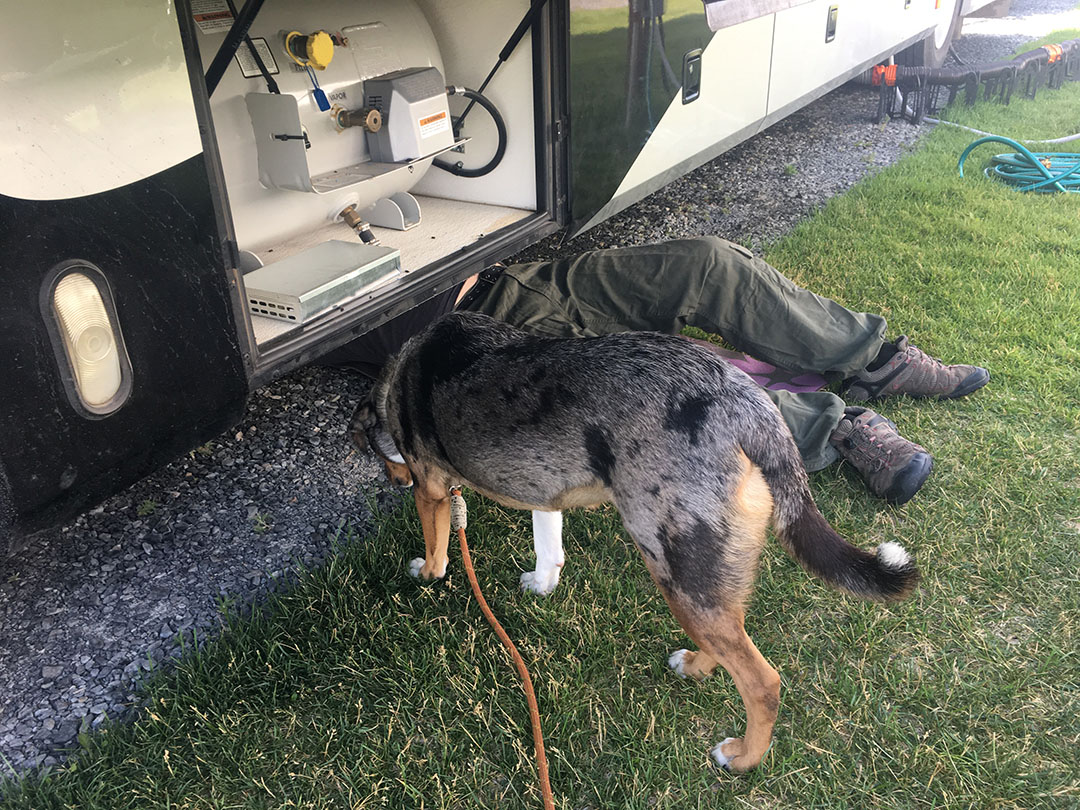
Lily helping Tommi look for the entry point of our visitor.
How does this happen?
We boondock often, which means we’re often in remote areas of public land. That land is home to many animals, we’re just parking on it! However this has also happened to us at state/city parks that are in rural areas. This is our current boondocking location – where we've caught two mice in our bays in the past 10 days or so.
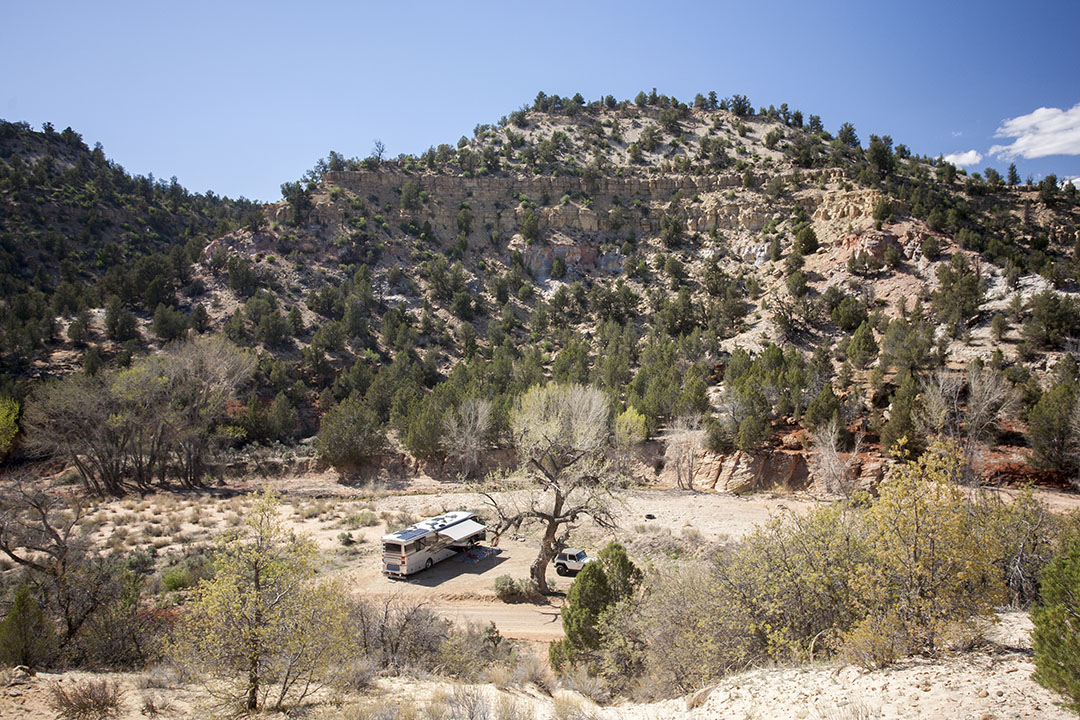
How will I know if I have a mouse or rat problem?
- You’ll hear them scurrying around the walls or basement of your RV, or if they’re stuck in a trap you’ll hear them trying to escape.
- You’ll find poop, pee, or a nest left behind.
- Cables and wiring are chewed. This is primarily a packrat thing.
- Your pets may act funny. Lily and Mushy have alerted us before that they hear something under the bed.
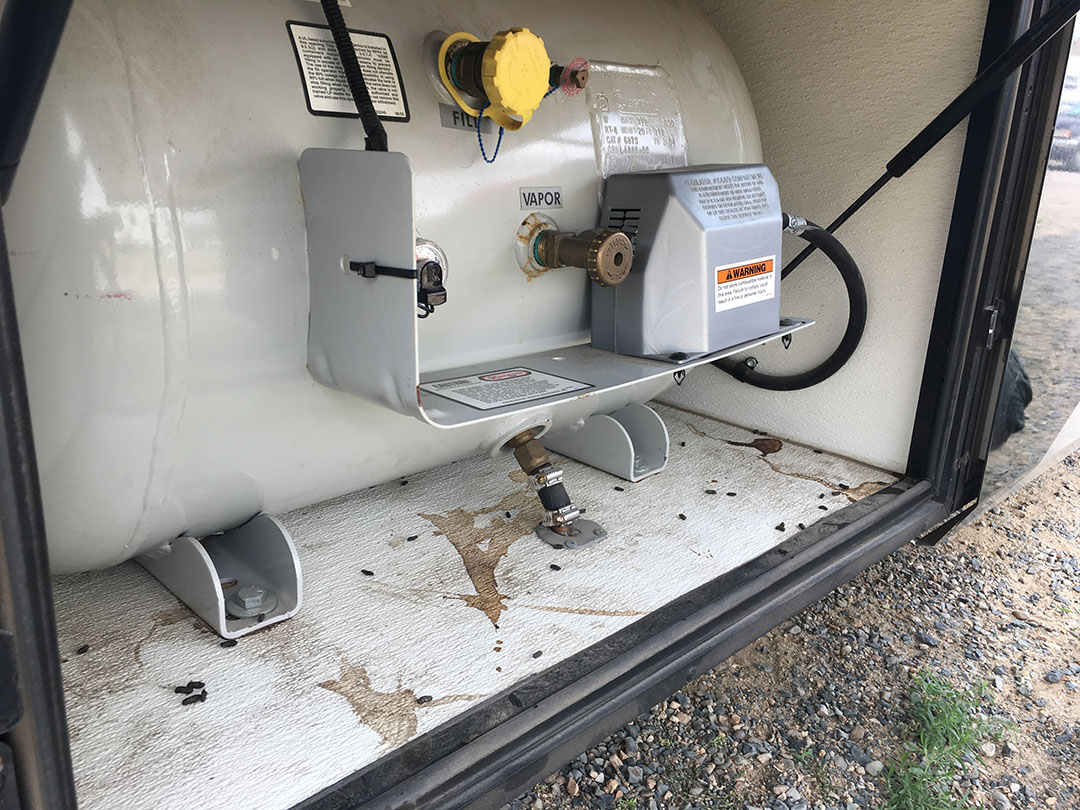
This was the evidence that first alerted us to our pack rat problem.
Under your bed??
Yes. Our bed lifts up and has storage and electrical connections underneath, which connect to the engine/bay area. The bed also slides out as part of the slide room. This seems to be a hotspot of mouse activity for us. It almost always happens at night. We set a trap (more on that in a bit) and as we’re falling asleep usually hear: “Tap tap tap... Hey. I’m stuck in here. I know you guys are trying to sleep but... Hey. Tap tap tap.”
But how do they get in your RV?
WE. HAVE. NO. IDEA. Well, we kind of have an idea but no solid proof. Tommi has looked in every visible crevice of our bays, engine, water heater, as well as under the RV. He’s closed up any holes that looked like they might have been entrance points. However there’s really no way to completely seal off the area where the chassis frame attaches to the motorhome, or to see completely into the engine space. We think they’re gaining access one of those ways.
Mice vs. rats vs. pack rats
The field mice we met in Utah were small and fit easily into our humane trap. They don’t seem to damage anything other than pooping and peeing up a storm while they’re visiting.
In Arizona and Utah we've had what we think are kangaroo rats, which look like mice with really big ears and long tails. They’re slightly larger than a normal mouse but still as cute, and also fit in the humane trap. They also enjoyed eating the foam sound insulation in our Jeep so keep that in mind if you have a toad!
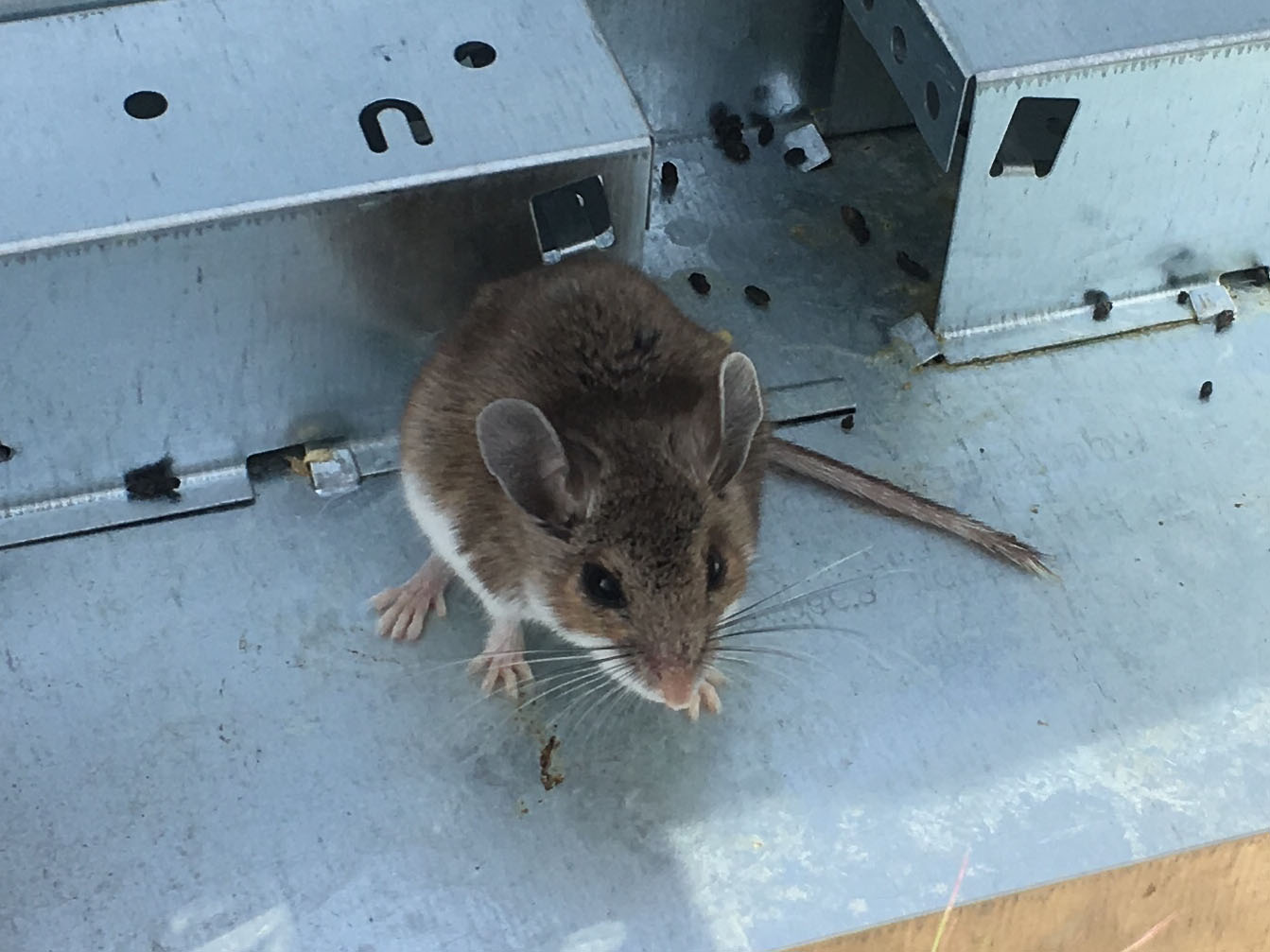
Finally, pack rats. We’ve only had one but it put up one hell of a fight. It hopped on board in Montana and we noticed it was hanging out in our propane bay. (This was before Tommi added mesh to the open holes in that bay).
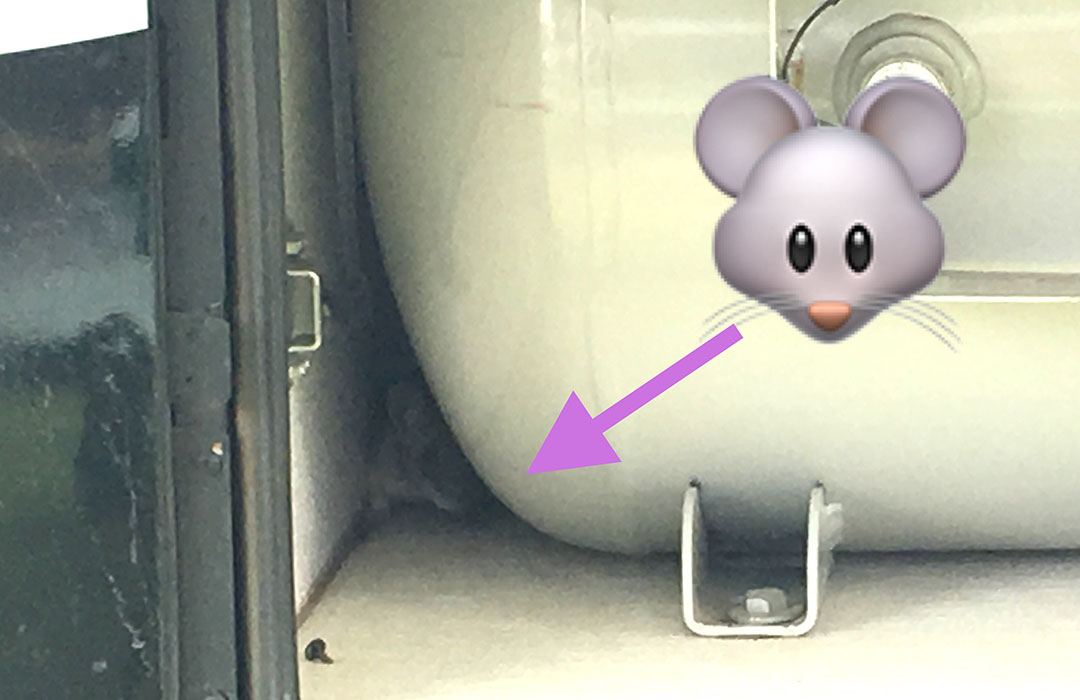
This pack rat was pretty big (and still cute!). We tried the humane trap, but the pack rat was way too big to get inside, even if it wanted to. We tried glue traps (with the hope that we could use oil after it was caught to release it without harm). It put up a big middle finger to our glue trap.
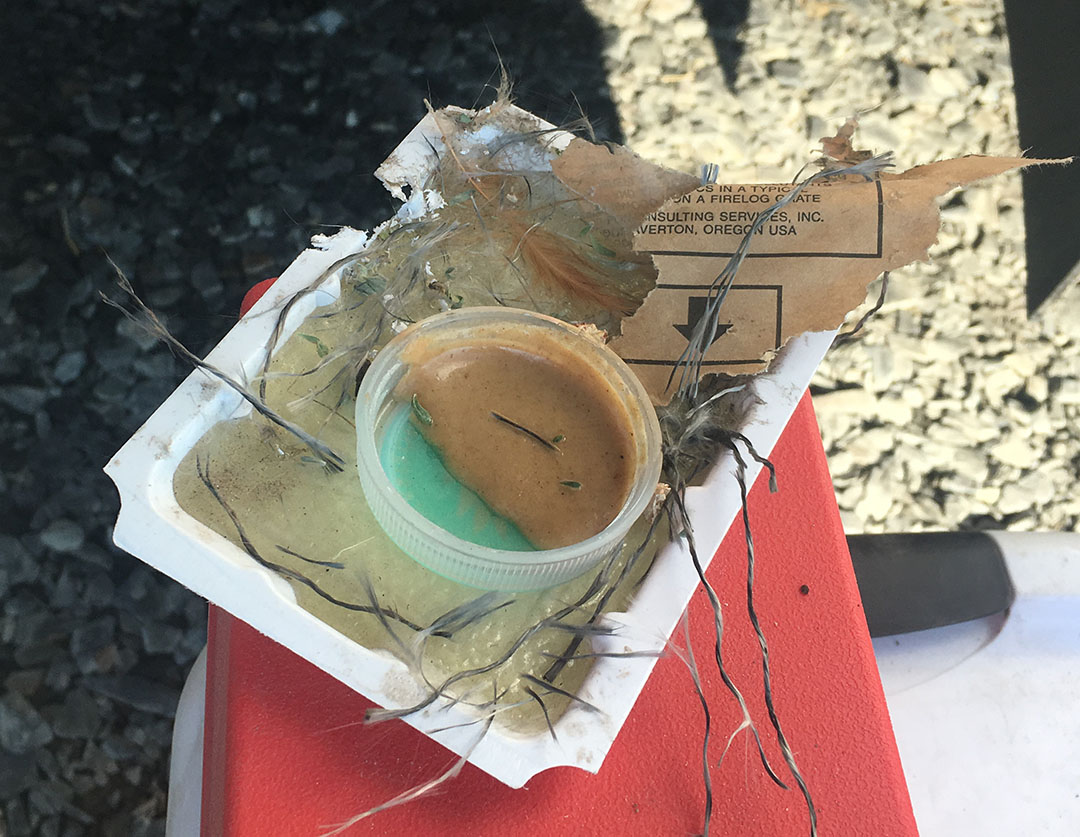
The peanut butter in a bottle cap was the bait. Everything else was put there by the pack rat.
Then we noticed it had moved bays and made a nest in a battery bay. We removed the nest, set the traps, stunk up the place with moth balls and waited another night. It came back with a vengence! The nest was rebuilt in the exact same location and it started chewing our wires!
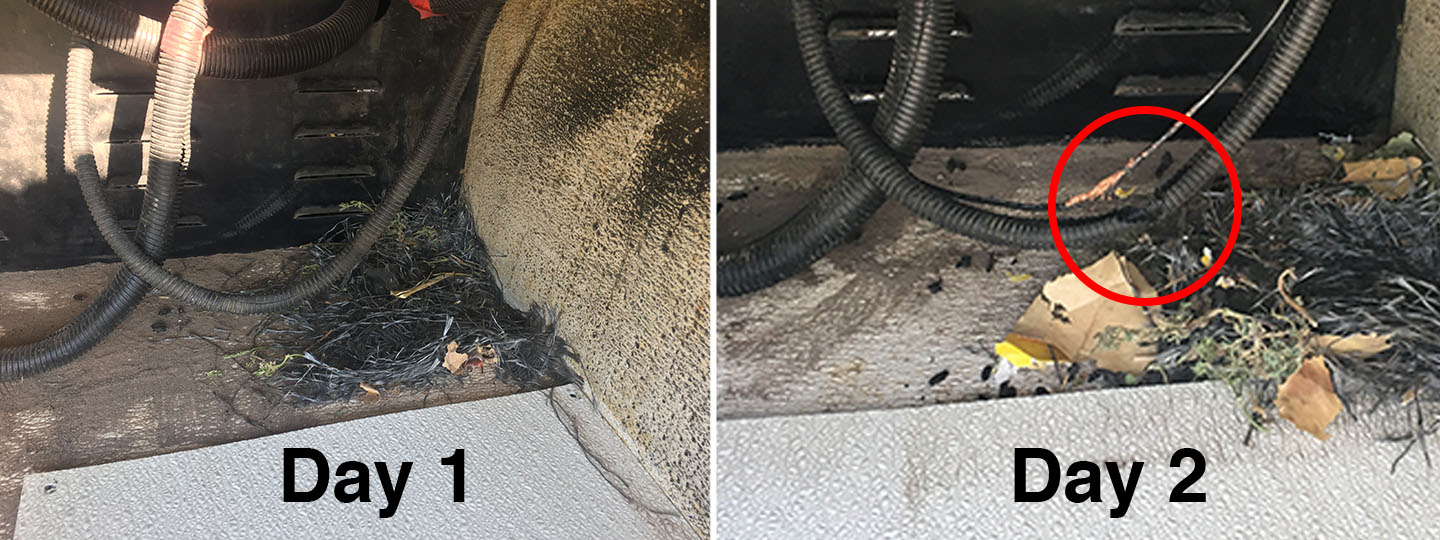
Ultimately, we couldn’t let that continue so we had to take more drastic measures. We still feel awful it ended that way but we saw no other option without letting it eat our home. If you’re having a packrat problem we found traps like this to work best. Drill a hole in the rear corner of the trap and tie it somewhere with a foot or so of cord, or the rat might drag it to an unaccessible location. Peanut butter seems to work well for bait, and tends to be always available in a dog family.
How we are handling the problem
1. Block as many entrances as you can.
Propane and lead-acid battery bays need to be vented. Bay walls are often not shaped perfectly to fit the chassis I-beams. Mice are excellent climbers, can enter through any opening 1/4 inch or larger, and can chew a smaller opening to make it large enough.
Block as many of these mouse highways as you can. The only things we know to really block them are metal meshes (screwed down tight so mice can't push them in and make a gap) and Pestblock insulating foam, made to taste bad to them. We haven't had visitors in our propane bay since we blocked a gap between the chassis I-beam and rear wall by a combination of those two (the safety venting hole has a metal guard). If only the area between the rear diesel engine and the bays was accessible enough to make the same improvements there!
2. A good humane trap.
We are animal lovers, so from the beginning we decided we would try a humane approach to evict our uninvited guests. What we use and love is the Tin Cat.

Do you see that number on the front of the packaging?! 30 mice?! I'll be packing up and quitting RV life if I find 30 mice in this thing one morning.
The Tin Cat allows mice to enter the trap via a one-way door. They're stuck inside until you release them. At first, we left peanut butter inside the trap, but we've found that it works even without bait. Mice tend to walk along walls, and the trap entryways are right on the edge on both sides, so now we just leave it against a wall. This collage of four different days shows that the Tin Cat works, and that Tommi obviously has a favorite hoodie.

For now, the ideal spot for us to catch mice seems to be under our bed. They roam in different areas of our through bays, but so far they eventually always walk the exact same route under the bed.
3. Plastic storage containers for the bays.
We make sure most everything is stored in a plastic bin. Mice and rats will chew through cardboard and dog/cat food bags.
We do store dog kibble in the bays, but because we know that's extra tempting for rodents, it's sealed in a rodent-proof Gamma2 Vittles Vault, in a standalone bay that has no rear openings.
4. Move the RV every so often.
Obviously the more an RV sits still, the more interesting it may become to visitors. We generally find that we don't get mice the first night at a new place. It usually takes a few days for them to "find" us.
5. Place lights under the RV at night to deter mice.
We would always see folks with rope lights under their RV and never really knew why. Now I do! It works!
Right now, we're using regular 110VAC LED Christmas lights. But you have to remember to turn the lights on before sunset (turn them on too late and you might scare the mice into staying in your RV). And, if you're boondocking like we usually do, running the inverter through the night is a drain on our batteries. We have lots of "phantom loads" on the 110VAC side for everyday convenience, and together with the 3,000 Watt inverter overhead, they do add up. We might look for replacement lighting, ideally something 12V with a timer, and we'd need to set up a convenient 12V power plug in a bay, too.
You can also leave the hood of your toad open and add lights at night. The rule of thumb is to avoid providing dark hiding places. Our lifted Jeep has a relatively open engine area even with the hood closed, so we don't worry about that as much.
6. Strategically place mothballs in the bays.
We have an old sock with 3-6 mothballs in it (their strength depends on the manufacturer) taped on the walls in the three different bays we've had evidence of rodents in. They evaporate over time (again, depending on the manufacturer), so check and refill the socks. So far, they seem to be a decent deterrent, and we get fewer visitors in the first weeks after a mothball reload.
Getting this right is a bit tricky because in larger quantities, even from inside three nested ziploc bags, we can smell them inside the RV. Mothballs are toxic and we don't want to be breathing that stuff in either so we use as few of them as we can. You're also not supposed to touch them, so wear disposable gloves.
Our real remaining problem with mothballs seems to be where to store the extras, without breathing them in.
Some people have had luck with milder deterrants, such as Irish Spring soap and dryer sheets.
7. Remove any droppings or nests we find.
Luckily we haven't found any nests since our pack rat problem last year. If we find new droppings we remove them and clean the area, for obvious reasons but also so that we can tell if new droppings show up. Rodent droppings transmit disease so it is very important to use gloves and a mask if possible when cleaning. For a full list of precautions, visit the CDC website.
8. Repair electrical damage without delay.
Completely chewed wiring makes things not work, and that alone should motivate you into fixing it. Partially chewed wiring often keeps working but, because of the now-smaller wire gauge, can't tolerate as many amps of electrical charge, and becomes more prone to heating, melting, shorting out, and even catching on fire. Don't leave those hazards in place.
Cut the wire and wire loom and trim any damage on both sides, strip the wires and connect the ends with an appropriate size butt connector, and wrap that in electrical tape for extra protection. Nest one end of the wire loom in the other and wrap with more electrical tape.
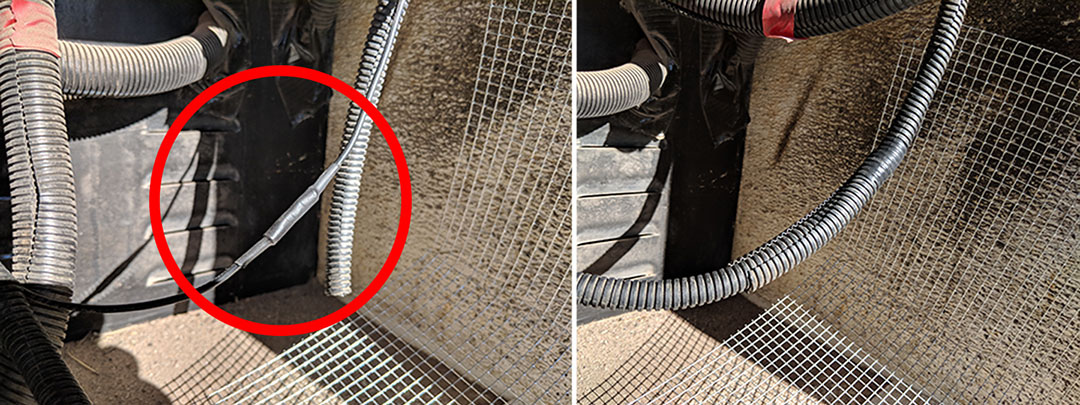
9. Re-home mice far away from the RV.
I believe 2+ miles is the suggested distance. We're not always that good, but we try. And trust me, they know which way is "home"! Once, we drove our Jeep a few miles away, Tommi stepped out and released two kangaroo rats from the trap. One ran away down a hill and the other made a mad dash for the Jeep! It crawled right up the tire and in the engine bay. We couldn't find it so it ended up coming right back to the RV with us! (That was a real "teaching" moment!)
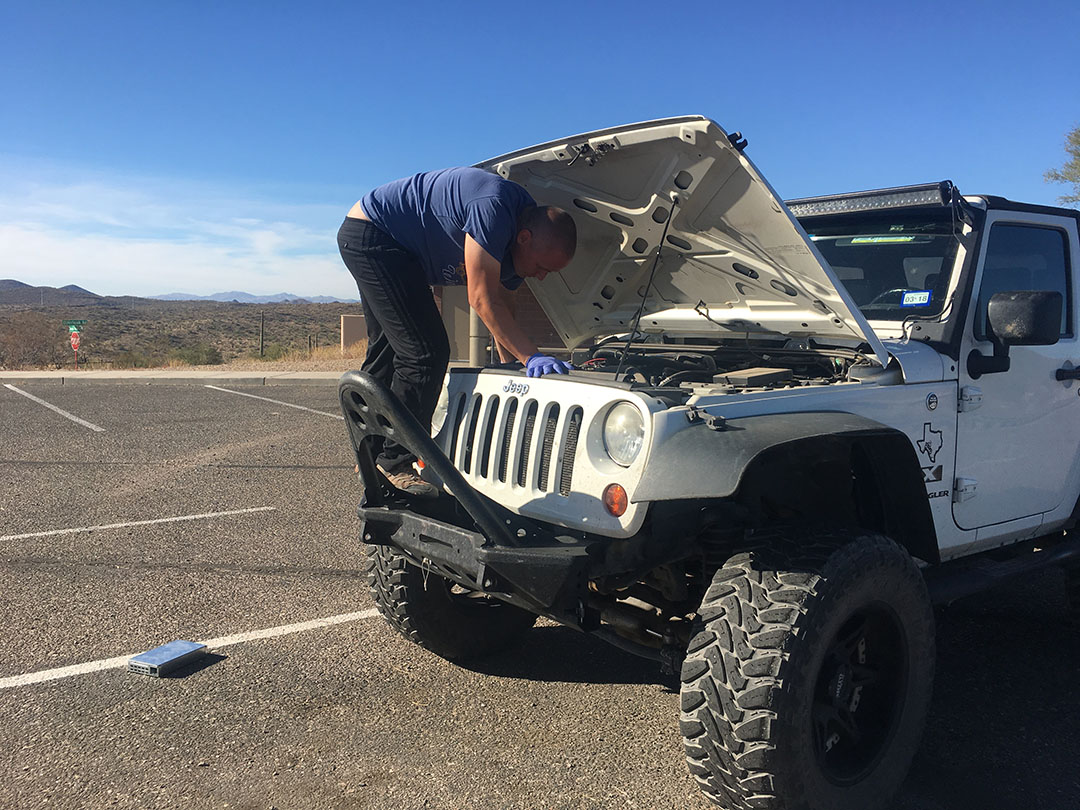
10. Adopt a cat.
Just kidding! But that's what everyone keeps telling us to do!
Conclusion
So at this point we're doing the best we can to manage the occasional mouse or rat that finds it's way to our RV. It's not overwhelming and we just consider it a part of RV life, especially while boondocking.
We are happy to report that we have barely any bugs and spiders in the RV, which is something we experienced way more of in our 1950's era rental house, so I guess we have to look on the bright side!
Shopping links are affiliate links and help us pay for this site. Our opinions are our own, and not paid for.
